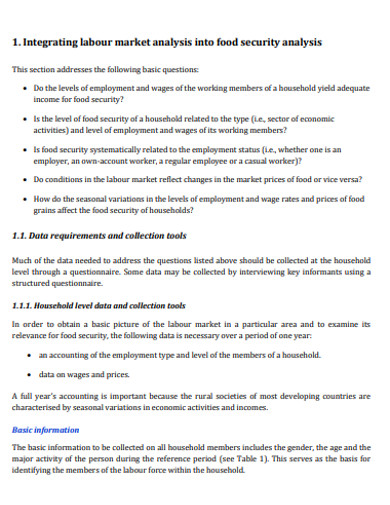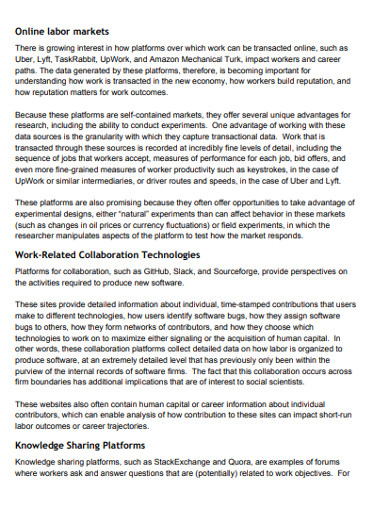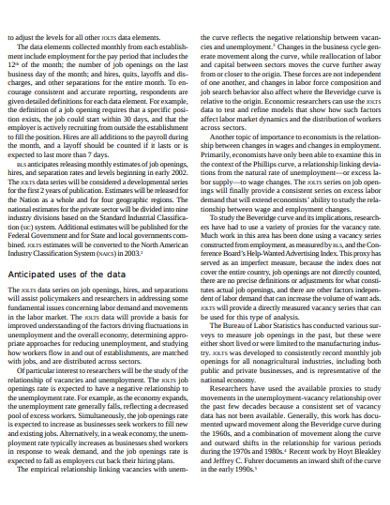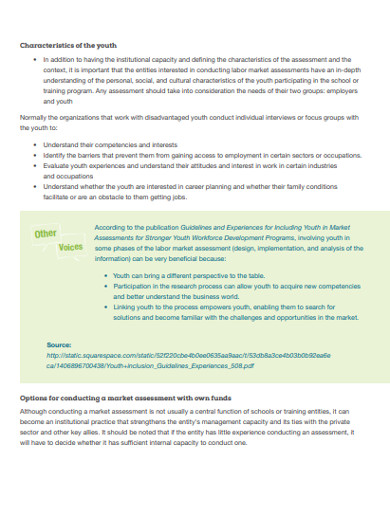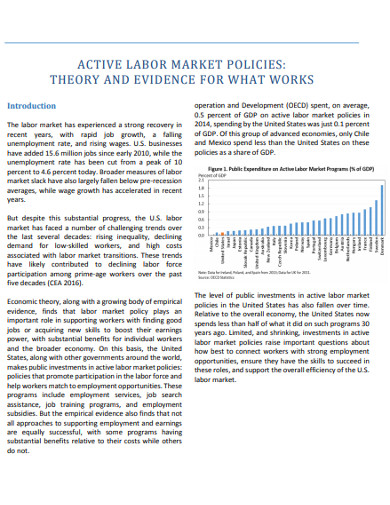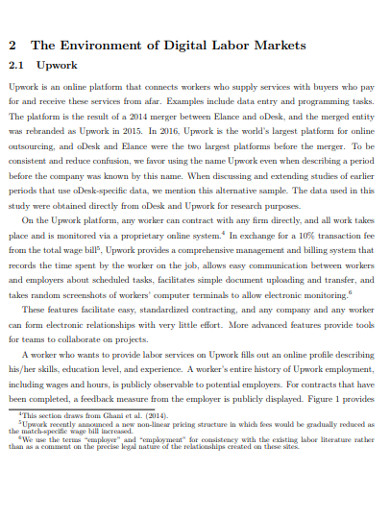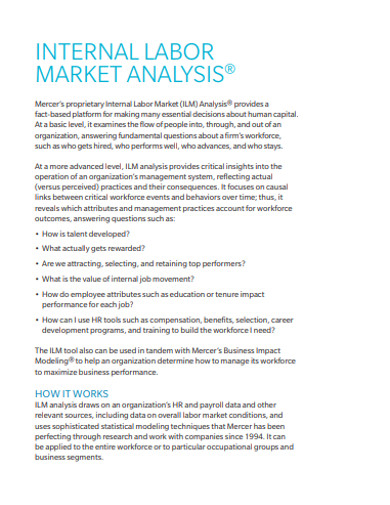7+ Labor Market Analysis Examples to Download
In the previous decade, the unemployment rate in the US was at its peak. It reached a whopping 9.6 percent in 2010. This phenomenon occurred following the 2008 financial crisis. During the first quarter of 2008, the US GDP went down to 1.8 percent. The effect of this great recession didn’t surface right away, but it hit the country in the latter year. However, this catastrophe didn’t last long since the economic decline has ended, and the unemployment rate gradually went down. As of November 2019, the unemployment rate is only 3.5 percent. Unemployment is one of the data points of the macroeconomic outlook that property investors, economists, and policymakers can refer to when determining and analyzing the health of the labor force market. Read through the article to know more about the labor market analysis.
Affecting Factors of Labor Markets
Aside from unemployment, investors, economists, and policymakers also consider discrimination, unions, and income inequality as factors that can affect the labor market and economic analysis. Employees going on strike, finding out that people from different firms who are doing the same job are earning more, will significantly affect the labor market. If employers do not respect and treat the people fairly, the same result will occur.
What is Labor Market Analysis?
Before we go deeper, you should know that a labor market is a place where the supply of jobs meets the demand for employment. In other words, it is a place where workers can offer their services to the employers, which can be an organization that needs individuals to do specific jobs and will compensate for the services that the employees can give. Through labor market analysis, employers can find the best employees for the particular tasks of a company and provide competitive compensation for their workers. These essential functions make this type of analysis a crucial part of a company’s recruitment strategy.
7+ Labor Market Analysis Examples
Below are the examples that you can refer to and use as a guide if you are going to conduct a labor market analysis.
1. Labor Market Data Analysis Example
2. Labor Market Food Security Analysis Example
3. Labor Online Market Analysis Example
4. Sample Lobar Market Analysis Example
5. Labor Training Market Analysis Example
6. Labor Market Policies Analysis Example
7. Labor Digital Market Analysis Example
8. Internal Labor Market Analysis Example
Processes Involved in Labor Market Analysis
In general, below are the processes that the authorities in conducting a labor market analysis which you can follow as well if you are trying to carry out the same study.
1. Determine the Labor Market
The first thing that you need to do in conducting a labor market analysis is looking for the correct labor market for a specific type of job position. The labor market can be local or national. It consists of a smaller workforce market with different qualifications and skills. In this area, you can exchange information with the job seekers about the necessary information for your analysis.
2. Survey the Market
The value of each company can vary to different factors, such as the income it generates. Depending on the value of the company, the salary of the employees of each company may differ. In this process, you will determine the salary of the same position in each company. Other factors to consider in the salary differences in the location of the operations.
3. Identify the Market Trends
Now that you know how much the companies pay for the given job position, you also have to determine the latest employment trends in the job market. Most companies offer an annual increase in their monthly payments. Some offer excellent career growth management programs such as career ladders, career progression, and advanced training programs. They also provide exclusive compensation agreements. In this process, you will have to gather this type of information concerning the positions at hand. Other information that you can collect is the ancillary pay and different pay practices of each company.
4. Recommendation
Analyze the information that you have gathered in the previous processes. You can create a graph or chart for a better view of the data. With this information, you will be able to decide the best salary amount recommendation for a specific position. You can also adjust the amount basing the factors that you can consider, such as the actual tasks that your company gives to the employees in a specific position.
5. Consult with the Management
One of the primary reasons for conducting a labor market analysis is to hire the best employees to do the tasks needed by the company. Thus, you will have to consult with the management with the workforce that they need. This process will require you to have a meeting with the team to ensure that you will hire the right person for the job.
Part of building a prosperous company is hiring the best people that fit the positions. With the help of labor market analysis, you can do the task quickly.




